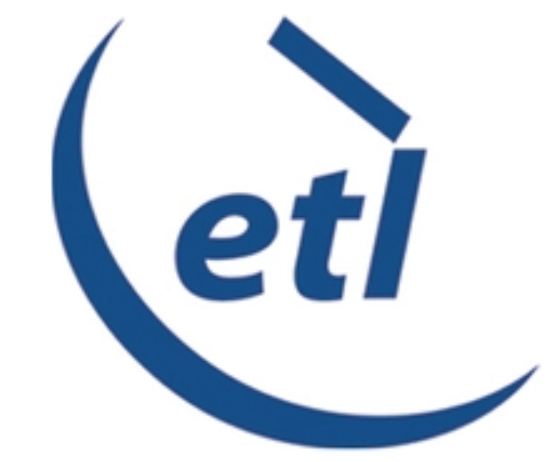Last year, during a conversation centered around the evolution of satellite broadcasting and the dynamic transformations within the industry, I wrote about the gradual shift from analog to digital and the impact of changing customer expectations.
As of April 2023, an estimated 3.5 billion people worldwide are streaming Over- The-Top (OTT) content, while 5.46 billion are still using terrestrial TV and home video. With this in mind, the continuous transformation of broadcasting and streaming services is putting pressure on production teams to look for ‘the next best’ delivery method.

At the International Broadcasting Convention (IBC) in Amsterdam, one of the key talking points was the idea of “enabling content anywhere” and how, as broadcast enablers, we can achieve connectivity in even the most remote locations.
Last year, the Qatar World Cup raked in an average of more than five billion viewers worldwide. In order to achieve coherent coverage, two of the largest UK-based broadcasters, ITV and the BBC, joined forces to deliver this event for those at home. With the 2024 Paris Olympic Games rapidly approaching, there is no doubt that broadcasters are working hard to find innovative ways, including greater collaboration, to most effectively use analog and digital signals.
August of 2023 saw Media Rights-Holders (MRHs) from around the world gather in France to attend a World Broadcaster meeting that was organized by the Olympic Broadcasting Services (OBS) to discuss and finalize their plans for coverage of the Games next year.
A record-breaking 11,000 hours of content is expected to be produced, including more athlete-centric stories, pre-and post-competition interviews as well as behind-the-scenes scoops. The 2020 Olympics in Tokyo pulled in an average of 3.05 billion live viewers, as well as 28 billion, post-event video streams, representing a 139% increase compared to the 2006 Olympic Games in Rio de Janeiro.
From that upward trajectory, the question arises: How can broadcasters optimize their coverage for the next Olympic Games, and any other international sporting events in the future?
Broadcaster Collaboration
As previously mentioned, the Qatar World Cup in 2022 witnessed the collaboration between two major UK-based broadcasters to attain quality coverage.
During planning for the World Cup, the projection was that millions of viewers in the UK would be tuning in. The final total came to 20 million, and therein lies the reason why the BBC and ITV partnered up to facilitate the broadcasting of the games.
Timeline TV, as commissioned by BBC and ITV, that fully integrated the required cameras and recording equipment into the stadiums, as well as kitting out production control rooms in the International Broadcasting Centre in Doha, and at HQ3 in Dock10.
Using remote service production principles, the initial feeds captured by Timeline TV were processed by hardware in Salford, while the sound, graphics and vision were mixed using control panel interfaces in the production control rooms in Doha. This was essential because keeping the production team close to the high-stakes matches enabled the team to make split-second decisions if, and when, they were needed. Having the two feeds, the live feed from Timeline TV and the mixed content from the production control rooms made it easier to broadcast seamless coverage.
While it is yet to be confirmed what solutions will be used for the Paris Olympics, one way that broadcasters can achieve cohesive coverage is through collaboration, supporting each other to deliver one high-quality broadcast that can be delivered across the world.
The Growing Importance Of Satellite + Terrestrial Networks
It is important to acknowledge that a combination of satellite and terrestrial signals will be needed to satisfy the high — and increasing — consumer demand for reliable broadcasts. Responsible for designing and defining specifications, network architects continue to focus on how signals can be converted from analog to digital, and vice versa.
At ETL, we have been collaborating with the Digital IF Interoperability (DIFI) Consortium, a working group of experts who are dedicated to developing interoperable digital interface/radio frequency (IF/RF) with the goal of digitizing the Radio Frequency (RF) spectrum. The Consortium has introduced the new DIFI standard that will ensure interoperability across signatory parties, built upon the extensively accepted VITA 4.2 standard.
Once we have the technology fully established, broadcasters will be able to move an analog signal from one place to another over a digital network, digitizing/encrypting it at the transmit end and restoring it/decrypting it at the receiving end. In the medium term, this innovative breakthrough will decouple the network operation center from the antenna and unlock myriad benefits, including greater speed and control of signals.
Enhance Signal Control + Speed
During major events, such as the recent World Cup, the transmission of content involves traversing four primary transmission links, each serving a crucial role in delivering the spectacle to viewers. These stages encompass the journey from the camera capturing the action to the production control room, where content is managed, then onwards to a local hub for further distribution. This is then followed by international transit before reaching the viewers’ screens within the broadcasters’ designated region.
At every stage of the terrestrial transmission process, data is directed through switches, which each cause a miniscule delay. When these delays accumulate across the various stages, they can result in overall latency that detrimentally affects the viewing experience, particularly for those relying on real-time connections.

Given that broadcasting live sports demands impeccable timing and immediacy, the presence of such latency becomes untenable. As a result, many opt to circumvent terrestrial links altogether by using satellite networks.
The use of cutting-edge digitalization technologies brings with it two advantages. First, it leads to a reduction in both the operational and capital costs associated with the broadcasting process, enabling broadcasters to provide better link availability and RF signal quality. Simultaneously, it will be possible to offer stronger digital encryption of analogue signals for increased security.
The broadcasting industry marches forward with remarkable advancements and new technology that continues to progress at pace, assisting broadcasters in bringing high-quality coverage to people’s homes.
As technology develops, viewers can continue to anticipate high-calibre coverage of events with even more content than ever, available to enjoy from the comfort of their own homes.
Viewers may not realize the groundbreaking innovations going on behind the scenes, but with satellite and terrestrial networks working in seamless harmony, the experience only stands to be improved for major broadcast events around the world.
www.etlsystems.com

Author Andrew Bond is the Sales and Marketing Director at ETL Systems. Andrew’s speciality is the sales and marketing of technical communications products, with a focus on developing international brands and sales networks. He joined the ETL team in June of 2005 to support the firm’s expansion into new global markets and has since seen sales grow around 20% per year. Andrew has an sales grow around 20% per year. MBA from Edinburgh University.

